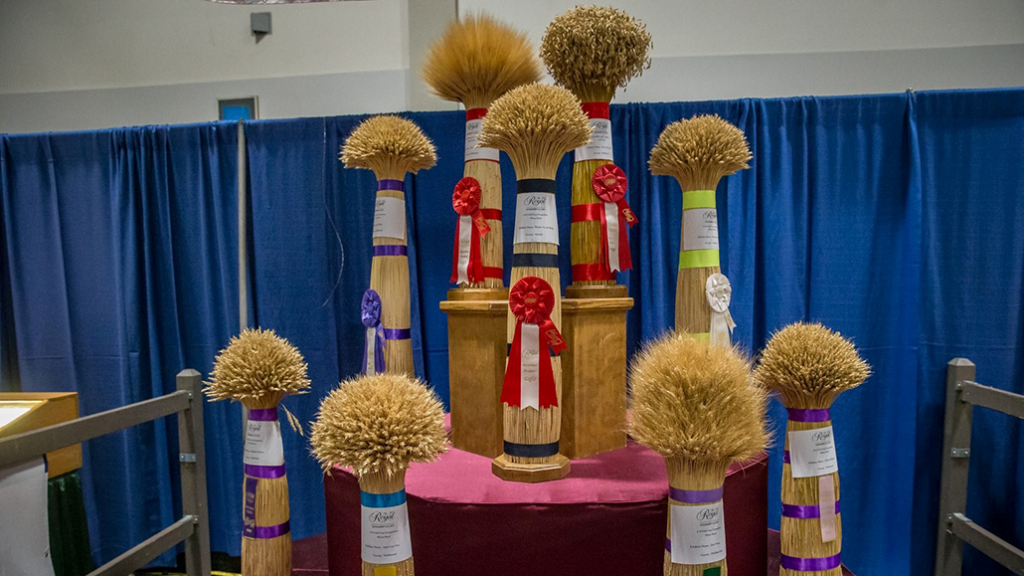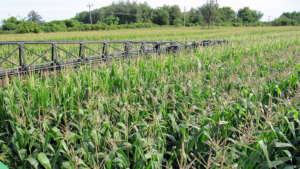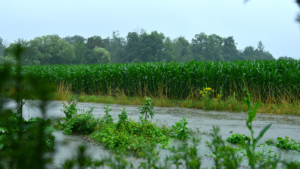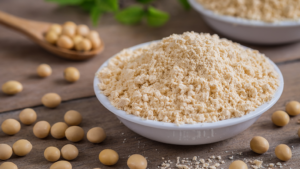The Royal’s 100th anniversary
CELEBRATING AGRICULTURE’S HISTORY AND FUTURE

THE SMELL IS always what brings back great memories of the Royal Agricultural Winter Fair (RAWF) for Crystal Mackay.
“The smell of sawdust, the cattle, the horses, it just puts me in a happy place,” she says of the fair that is celebrating its 100th anniversary from November 4 to 13. It will be the first in-person event after a two-year hiatus due to the COVID-19 pandemic.
Mackay also really appreciates all the connections she’s made over the years and is looking forward to seeing old friends and meeting new ones in person at the 2022 festivities.
In her younger days, Mackay showed dairy and beef calves as a 4-Her and took part in the first Young Speakers for Agriculture competition in 1985, where she took third prize.
“Getting to go and stay in Toronto when you grow up in a rural area, the sense of community from participating in the opening parade with all the county signs, getting to know people from across the province, and the pride you feel of being in a world-class show,” she says when remembering the high points of her early experience.
Mackay, who is now recognized across the country as a strong agricultural advocate and the accomplished business owner of Loft32, has been on the RAWF’s board of directors for four years.
Millions of others have shared the joy of competing at and attending the Royal over its century-long history.
IN THE BEGINNING
In the early part of the 20th century, a group of Canadian farmers led by W. A. Dryden recognized that, while there were several large U.S. livestock shows, there was no nationwide competition in Canada.
“They thought that we should have a competitive show of our own and pulled together the Royal Agricultural Winter Fair,” says Charles Johnstone, who has been CEO of the Royal since 2015.
There was a debate among selection committee members about whether the fair should be in Hamilton or Toronto. Dryden’s tie-breaker vote set the course of history for what is now the world’s biggest combined indoor agricultural fair and equestrian competition in Canada’s largest city.
Early construction problems with the Coliseum meant that the planned 1921 launch had to be delayed to 1922, which was actually fortuitous, 100 years later.
“It means we can have a live fair, as opposed to last year, when we would have had to cancel it,” Johnstone says of the fact that COVID-19 still posed a clear and present danger in 2021.
The timing of the fair in November was critical. It came after harvest for farmers and did not compete with agricultural shows in New York and Chicago.
The group had to obtain permission from Buckingham Palace to use the word “royal” in the title — a word that is now shorthand for a fair that is the pinnacle of the year for farmers, agri-food industry tradespeople, foodies, and equestrian competitors.
Besides the recent pandemic, the only other interruption in the RAWF’s history was the second world war, when it was closed down for six years, and the site was converted to help serve Canada’s military effort.
In 1946, it came roaring back, bigger and better than ever, and the momentum hasn’t stopped, with the fair changing and evolving with the times.
RAWF TODAY
While the pandemic took an awful toll on the country and its people, there were some upsides for fair organizers.
“Like a lot of organizations, we did a pivot to online — meaning we emphasized the education part of our mandate, which has been in place since 1922,” Johnstone says.
Going digital expanded the fair’s reach to teachers across the country.
“Some of these teachers would never be able to bring their class to the Royal, but we’re still reaching them with good, credible information, including virtual farm tours and engaging, age-appropriate content,” he adds.
This year, they’re taking the best of what they did online during the pandemic and marrying it with live events on-site, expecting more than 300,000 visitors.
FOCUSING ON THE FUTURE
This year’s fair theme is “A Century of Champions” — a reflection of the Royal’s record of showcasing the best that Canadian agriculture has to offer.
“This is a completely new launch of the fair — not only looking back on the last 100 years, but forward to the future,” Johnstone says. “We were able to do all sorts of things that we couldn’t do in a ‘normal’ year to set up beautifully for this year.”
Included are millions of dollars in investment — the largest in the RAWF’s history — in new branding, new site layouts, a refurbished horse palace, painting, new stalls for the cattle barns, new lighting, and more.
To kick things off, there’s a showcase on November 2 that will include performances by First Nations musicians, a pipe and drum band, a show-jumping exhibition, and a livestock show. Well-known Canadian comedian Rick Mercer is emceeing the event, and Blue Rodeo will end the evening with a concert.
“The Royal provides an excellent forum for people to talk to producers to get an understanding of what’s happening locally, nationally, and around the world and how that affects our food and how they feed their families,” Johnstone says.
MORE THAN JUST A SHOW
Both Johnstone and Mackay emphasize the economic contributions of the Royal.
Competitions for some of the food categories – like ice cream and cheese – were held in June this year, so the best of the best could take advantage of marketing their accomplishments through the peak of their selling seasons. They’ll also be showcased at the fair, in the food court, in the culinary academy, and in the “Spotlight on Local” trade show.
“While the fair itself generates about $25 to $35 million in economic activity, millions more are generated in agricultural sales that happen on-site and after the fair,” he says.
When asked why the Royal has lasted so long, Johnstone says, “it’s a unique event in its ability to bring the country to the city every year, and it’s also about attracting the best producers from across the country to connect with buyers from around the world.”
The Royal has been able to sustain itself through the decades, and the trajectory for the future remains very positive,” he says. •

























